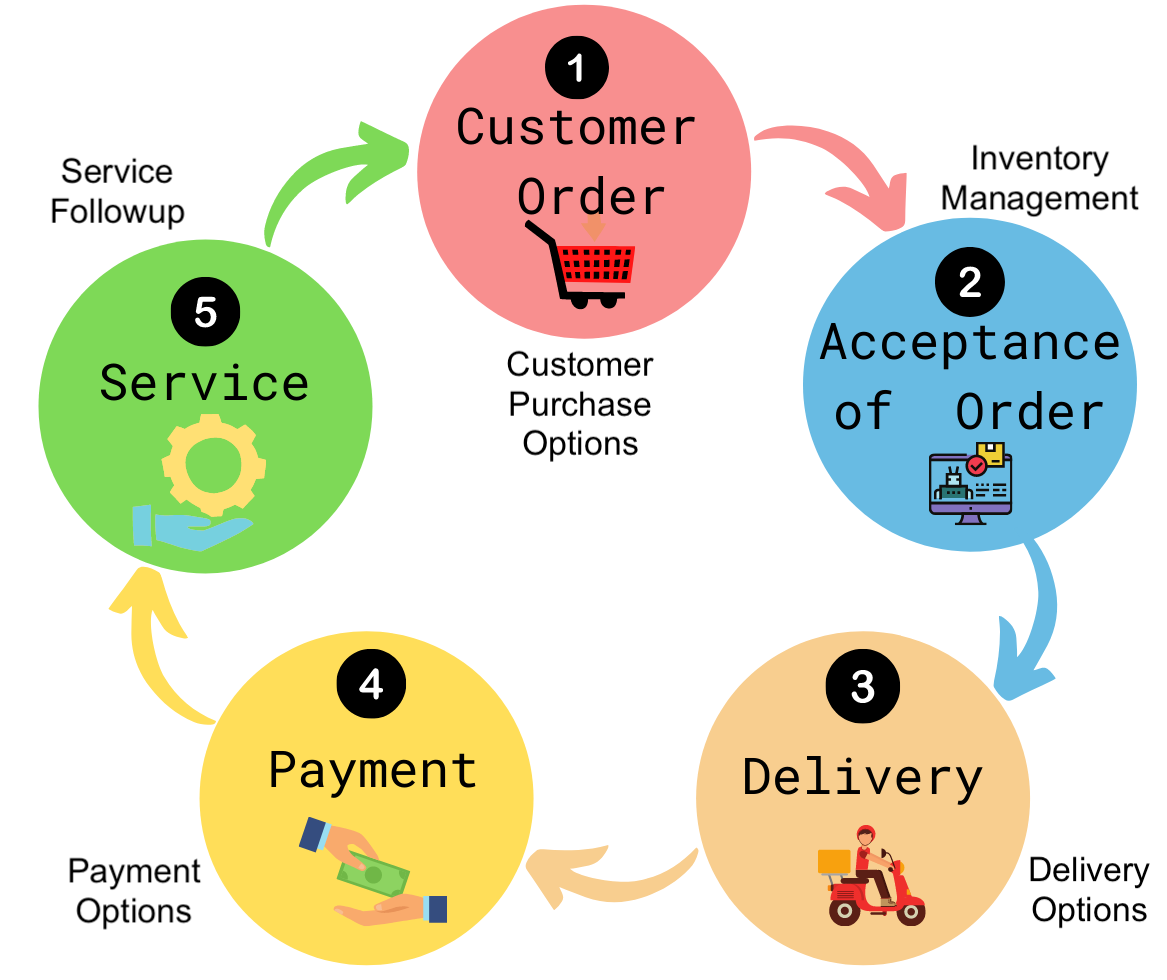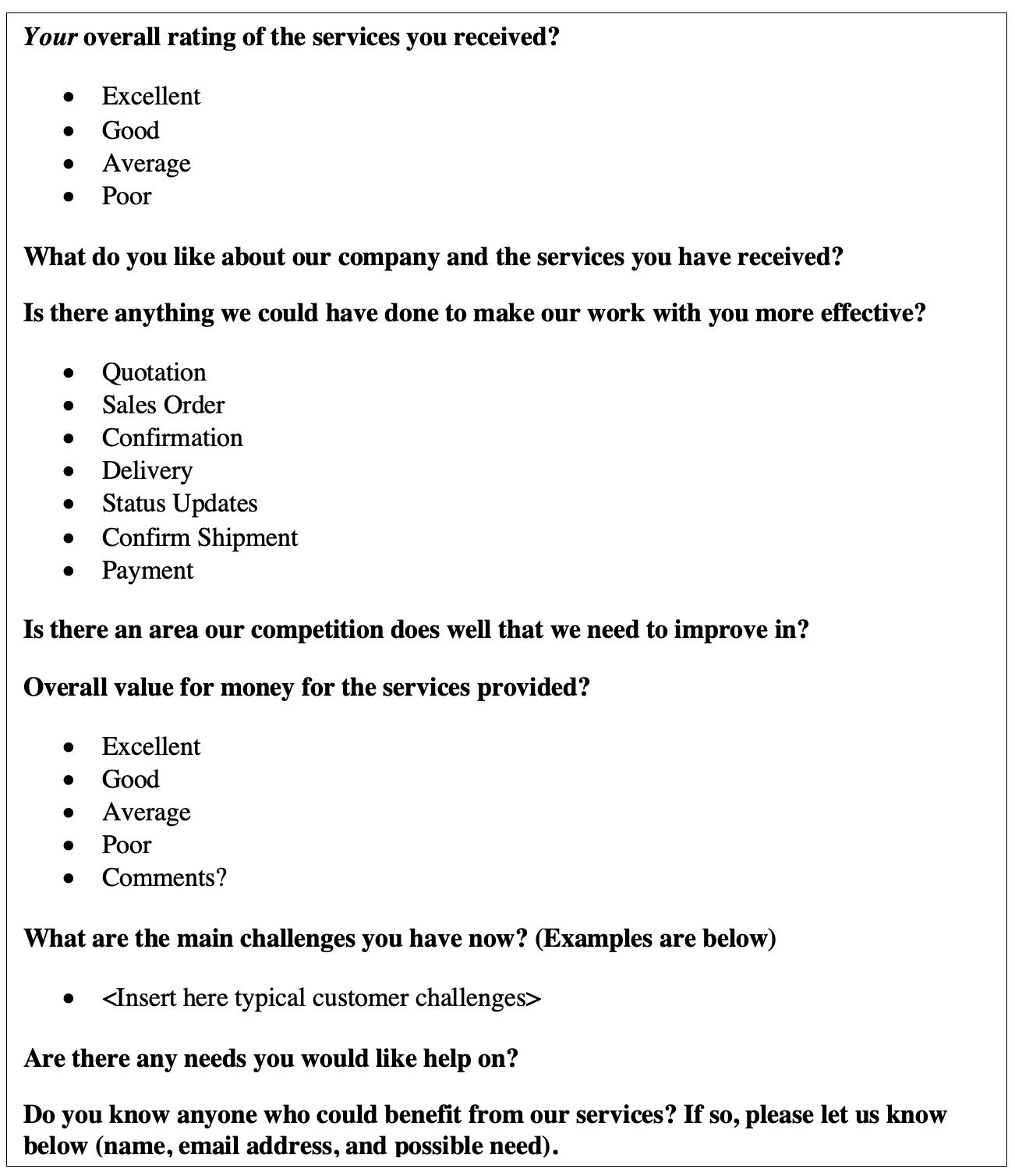Introduction
Most of us work on a project for a long time, assuming what we are doing is great and no changes are needed. Later, we show the customer, and they want numerous changes that would have been much easier to make earlier on.
Examples of what the customer did not like
- The contract was not flexible enough – there were options they really did not want.
- The sales person was not very knowledgeable in the product or service.
- Company staff had to be repeatedly reminded about promises made.
- The product was the wrong color or size.
- Everything was great – until delivery and installation!
The customer might not tell you about any of these things until it is too late, so you need a way to ask at regular intervals.
Examples of what the customer did like:
There are also positive things that happened that you could repeat if you knew about them!
- The sales person was awesome. She pointed out options that the customer did not know about.
- The responsiveness of the staff made the sale.
- The risk-free guarantee made all of the difference since the purchase was large.
- The free fitting session made the sale, since no competitor did this
What feedback to obtain and when?
Start by looking at the end-to-end flow of how you interact with customers. This will highlight places where you can ask for feedback.

You could seek feedback after each step, or seek feedback at the very end, and mention the steps they went through. Asking for feedback verbally after every event could become annoying. Instead, you might mention a survey link that could be used at anytime, in addition to times you ask verbally.
Here is an example survey that could be provided at the end. You could modify it to say "...received so far" and use it before the end. Keep surveys to one page so they are not overwhelming.

Incremental feedback
If you are delivering a recurring service - for example, a monthly service - you might seek feedback more often at the beginning. For example, ask for feedback on every service event for the first two or three months, and then provide a web link for comments after that.
Addressing the issues and communicating results
Assume that the customer does not know if you read the feedback or whether you fixed any of the issues. If you have fixed something, tell them; they might be impressed by your responsiveness, buy again, or tell a friend.
I am always surprised that I have to manage the follow-up tasks for my suppliers. I send them emails and texts of issues to resolve and update the list as they are addressed. I have yet to find a supplier that does this simple task for me. Usually the vendor is focused on the next sale and does not see the need to wrap up loose ends in the current sale.
If you don't want to communicate with a particular customer on a more pervasive issue you fixed, then write a simple newsletter for your customer base and mention it there. "Hey, you know that issue we had with our website never working? "We fixed it."
Use a physical or digital feedback form?
Physical feedback form
If you interact with your customers in-person, then a simple postcard-sized form might be the most convenient. Put a stack of cards somewhere and a return drop-off point.
Phone/web feedback form
If your customers are in a position to access their phone or a browser, then make a survey available digitally. Examples are:
- A webpage to collect data and provide a short link (e.g., www.your-company-name.com/survey).
- A QR ("Quick Response") code that points to the survey link. QR codes can be generated by going to https://www.qr-code-generator.com . Type in the webpage URL that has your survey and the site will create a QR code. Here is a code I generated for a survey related to my other company.

Tools to manage customer feedback
There are many tools available to manage surveys. Here are some considerations when selecting a tool:
- How many customers are likely to use the survey? If you only have a handful of survey responses every month, then you might find that a home-grown free option is adequate (e.g., survey webpage or postcard).
- If you have numerous customers that are likely to fill the survey out, and you want to see trends over time, then you might use a paid service such as surveymonkey.com or Surveygizmo (now called alchemer.com). These are relatively expensive services, so determine if you really need all of their features.
- Try a search on "free equivalent to surveymonkey." I found these two somewhat biased articles, but at least they give you a few tool vendor ideas that have free plan options.
- https://qualaroo.com/blog/best-surveymonkey-alternatives/
- https://www.jotform.com/blog/best-surveymonkey-alternatives/
Conclusion
You never know what people like or dislike until you ask them. If they are happy, you will want to know what to repeat. If they are mad, you will want to know when the problem is small, so you can fix it.
Feel free to email with questions to neilpotter@icloud.com


